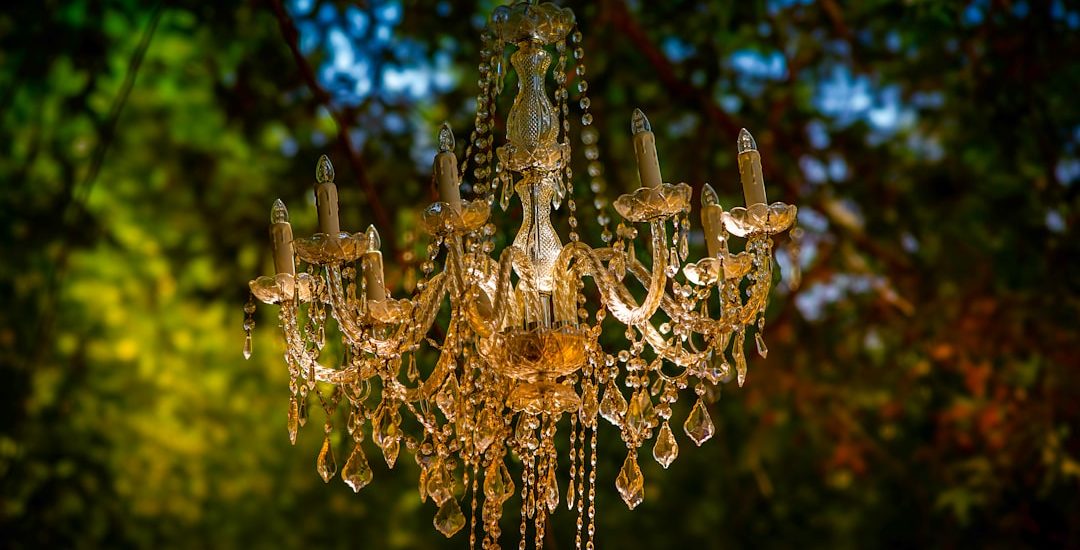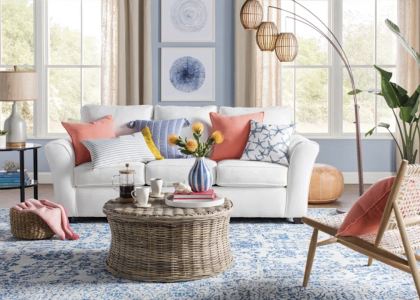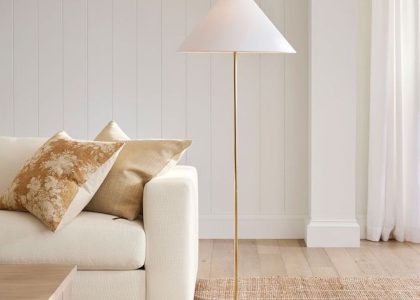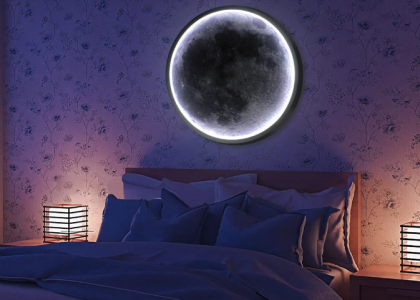The history of chandeliers is a fascinating journey that traces back to the medieval period, where their origins can be found in the simple wooden frames that held candles. Initially, these early lighting fixtures were designed to illuminate vast, dark spaces such as churches and castles. The word “chandelier” itself is derived from the French term “chandelle,” meaning candle.
As the demand for more sophisticated lighting grew, artisans began to craft chandeliers with intricate designs, often incorporating materials like wrought iron and wood. By the 16th century, chandeliers had evolved significantly, with the introduction of glass elements that reflected light more effectively. This innovation marked a turning point in chandelier design, as it allowed for greater luminosity and a more opulent aesthetic.
As time progressed, chandeliers became synonymous with wealth and status, often gracing the grand halls of palaces and affluent homes. The Baroque period saw the emergence of extravagant crystal chandeliers, which were adorned with cut glass prisms that refracted light into a dazzling display of colors. These ornate fixtures not only served a practical purpose but also became a symbol of luxury and sophistication.
The Industrial Revolution further transformed chandelier production, making them more accessible to the burgeoning middle class. By the 19th century, gas and electric lighting began to replace candles, leading to new designs that incorporated these modern technologies. Today, chandeliers continue to evolve, blending traditional craftsmanship with contemporary styles, ensuring their place as timeless focal points in both residential and commercial spaces.
Choosing the Right Chandelier for Your Space
Assessing the Space
Selecting the perfect chandelier for your space involves a careful consideration of various factors, including the room’s size, style, and intended use. A chandelier can serve as a statement piece that draws the eye and enhances the overall aesthetic of a room. To begin this process, it is essential to assess the dimensions of the space where the chandelier will be installed.
A general guideline is to add the length and width of the room in feet; this sum will give you an approximate diameter in inches for your chandelier. For instance, if your dining room measures 12 feet by 15 feet, a chandelier with a diameter of around 27 inches would be appropriate. However, this is merely a starting point; personal taste and the specific design elements of your room should also play a significant role in your decision.
Choosing a Style
In addition to size, the style of the chandelier Epalli must harmonize with the existing decor. Whether your home features a modern minimalist aesthetic or a more traditional design, there are countless options available to suit your preferences. For instance, a sleek, geometric chandelier may complement a contemporary space, while an ornate crystal fixture could enhance a classic or vintage-inspired room.
Functionality and Aesthetics
Furthermore, consider the function of the space when choosing your chandelier; for example, a dining room chandelier should provide ample light for meals and gatherings, while a bedroom chandelier might prioritize softer lighting for relaxation. Ultimately, selecting the right chandelier is about finding a balance between functionality and aesthetics, ensuring that it not only illuminates but also elevates your living environment.
Installing and Maintaining Your Chandelier
The installation of a chandelier can be a rewarding endeavor that transforms your space, but it requires careful planning and execution to ensure safety and functionality. Before beginning the installation process, it is crucial to turn off the power at the circuit breaker to avoid any electrical hazards. If you are not comfortable working with electrical wiring or if the chandelier is particularly heavy or complex, it may be wise to enlist the help of a professional electrician.
When installing your chandelier, ensure that it is hung at an appropriate height; typically, chandeliers should be positioned about 30 to 36 inches above dining tables and around 7 feet above floors in other areas to allow for adequate clearance. Once your chandelier is installed, regular maintenance is essential to keep it looking its best and functioning properly. Dust and grime can accumulate on both the fixture and its bulbs over time, diminishing its brilliance.
To maintain your chandelier’s luster, it is advisable to clean it periodically using a soft cloth or feather duster. For more intricate designs with crystals or glass elements, consider using a gentle cleaning solution specifically formulated for delicate surfaces. Additionally, check the bulbs regularly to ensure they are functioning correctly; replacing burnt-out bulbs promptly will not only enhance illumination but also prolong the life of your chandelier.
By taking these simple maintenance steps, you can ensure that your chandelier remains a stunning centerpiece in your home for years to come.
Chandelier Styles and Designs
Chandeliers come in an array of styles and designs that cater to diverse tastes and interior aesthetics. From classic crystal chandeliers that evoke elegance and grandeur to modern fixtures that embrace minimalism and innovation, there is a chandelier to suit every preference. Traditional designs often feature intricate detailing, such as ornate metalwork and cascading crystals that create a sense of opulence.
These timeless pieces are frequently found in formal dining rooms or entryways, where they can make a striking impression on guests. In contrast, contemporary chandeliers may incorporate unconventional materials like wood or acrylic, showcasing clean lines and geometric shapes that resonate with modern sensibilities. Moreover, chandeliers can also reflect cultural influences and historical periods.
For instance, Moroccan chandeliers often feature intricate metalwork and vibrant colors that evoke a sense of exoticism and warmth. Similarly, rustic chandeliers made from reclaimed wood or wrought iron can add charm and character to country-style homes or cabins. The versatility of chandelier designs allows homeowners to express their individuality while enhancing their living spaces.
Whether you prefer a vintage-inspired piece that tells a story or a sleek modern fixture that embodies simplicity, exploring various styles can lead you to discover the perfect chandelier that resonates with your personal aesthetic.
Using Chandeliers to Create Ambiance
Chandeliers are not merely functional lighting fixtures; they are powerful tools for creating ambiance within a space. The type of light emitted by a chandelier can significantly influence the mood of a room. For instance, warm-toned bulbs can create an inviting atmosphere ideal for social gatherings or intimate dinners, while cooler-toned bulbs may lend themselves better to workspaces or areas requiring focus and clarity.
Additionally, dimmable chandeliers offer flexibility in adjusting brightness levels according to different occasions—whether you desire bright illumination for entertaining guests or softer lighting for a cozy evening at home. Incorporating chandeliers into your decor can also enhance architectural features and highlight specific areas within a room. A well-placed chandelier can draw attention to high ceilings or unique design elements such as exposed beams or decorative moldings.
Furthermore, layering lighting sources—such as combining chandeliers with wall sconces or table lamps—can create depth and dimension in your space. This thoughtful approach allows you to craft an inviting environment that caters to various activities and moods throughout the day. Ultimately, using chandeliers strategically can transform an ordinary room into an extraordinary experience.
Chandelier Placement and Sizing
Optimal Placement for Aesthetic Appeal
Determining the optimal placement and sizing of your chandelier is crucial for achieving both aesthetic appeal and functional lighting in your space. When considering placement, think about how the chandelier will interact with other elements in the room—such as furniture arrangements and architectural features. In dining areas, for example, positioning the chandelier directly above the table creates a focal point while providing adequate illumination for meals.
Creating Balance and Visual Harmony
In living rooms or entryways, centering the chandelier within the space can enhance visual balance and draw attention to key design elements. Sizing is equally important; an oversized chandelier in a small room can overwhelm the space, while a petite fixture in a grand area may appear lost or insignificant. As mentioned earlier, calculating the appropriate diameter based on room dimensions serves as an excellent starting point.
Considering Ceiling Height and Chandelier Style
However, it’s also essential to consider ceiling height when determining how low or high to hang your chandelier. In rooms with higher ceilings, longer drop chandeliers can create drama and elegance; conversely, in spaces with lower ceilings, flush-mount or semi-flush designs may be more suitable to avoid obstruction. By thoughtfully considering placement and sizing, you can ensure that your chandelier enhances both functionality and beauty within your home.
DIY Chandelier Upgrades and Customizations
For those who enjoy hands-on projects or wish to personalize their lighting fixtures further, DIY chandelier upgrades and customizations offer an exciting opportunity to infuse creativity into home decor. One popular approach is to update an existing chandelier by changing its finish or color; for instance, applying metallic spray paint can give an outdated brass fixture a modern makeover or transform a plain white chandelier into a bold statement piece with vibrant hues. Additionally, adding decorative elements such as crystals or beads can enhance visual interest while allowing you to tailor the design to match your personal style.
Another avenue for customization involves incorporating smart technology into your chandelier setup. By replacing traditional bulbs with smart LED options, you can control brightness levels and color temperatures through mobile apps or voice commands—adding convenience while enhancing ambiance at any time of day. Furthermore, consider experimenting with different bulb types; vintage-style Edison bulbs can impart a warm glow reminiscent of bygone eras while providing energy efficiency benefits.
Whether through simple upgrades or more elaborate customizations, embracing DIY projects allows you to create a unique chandelier that reflects your personality while elevating your living space’s overall aesthetic appeal.






